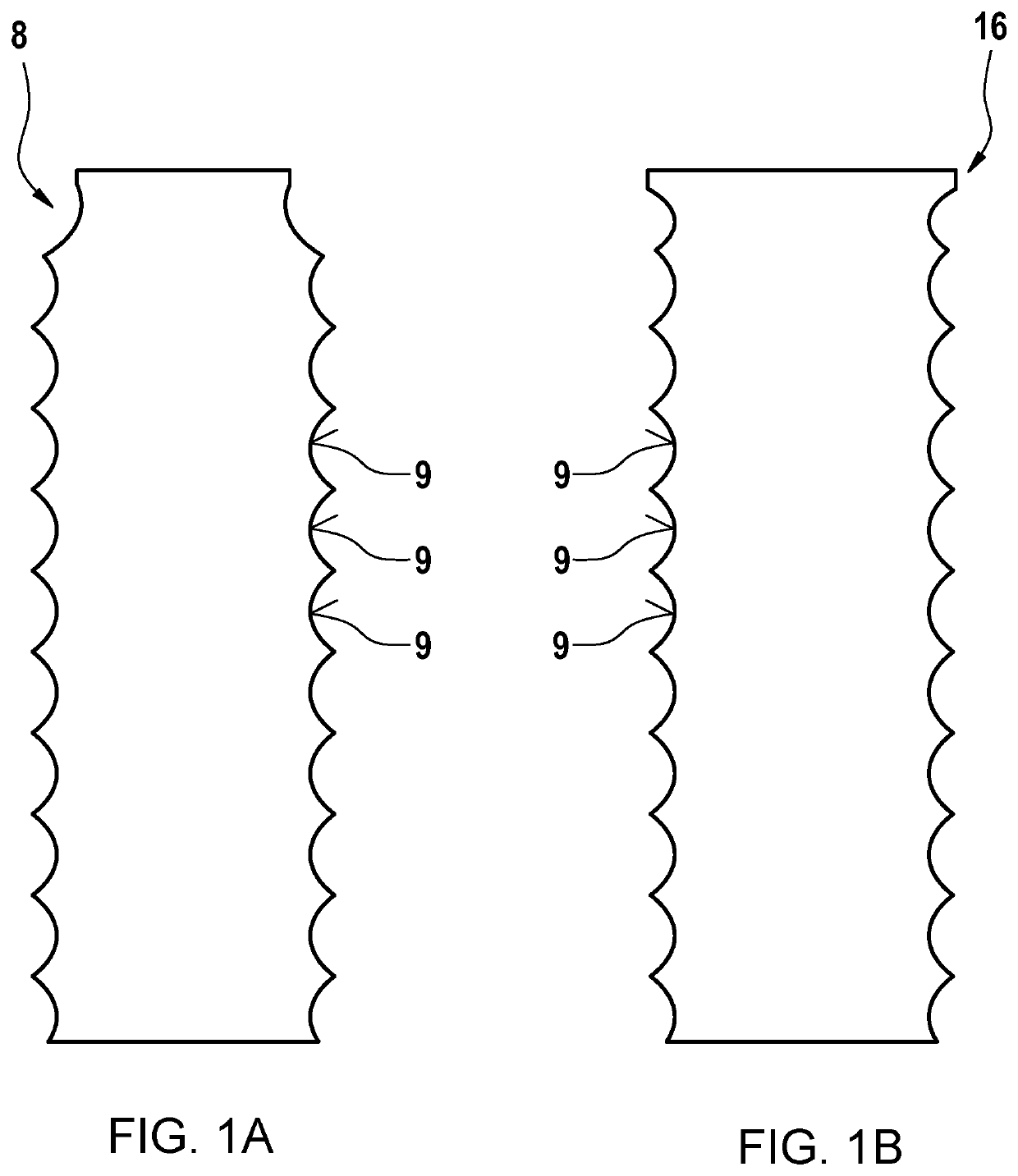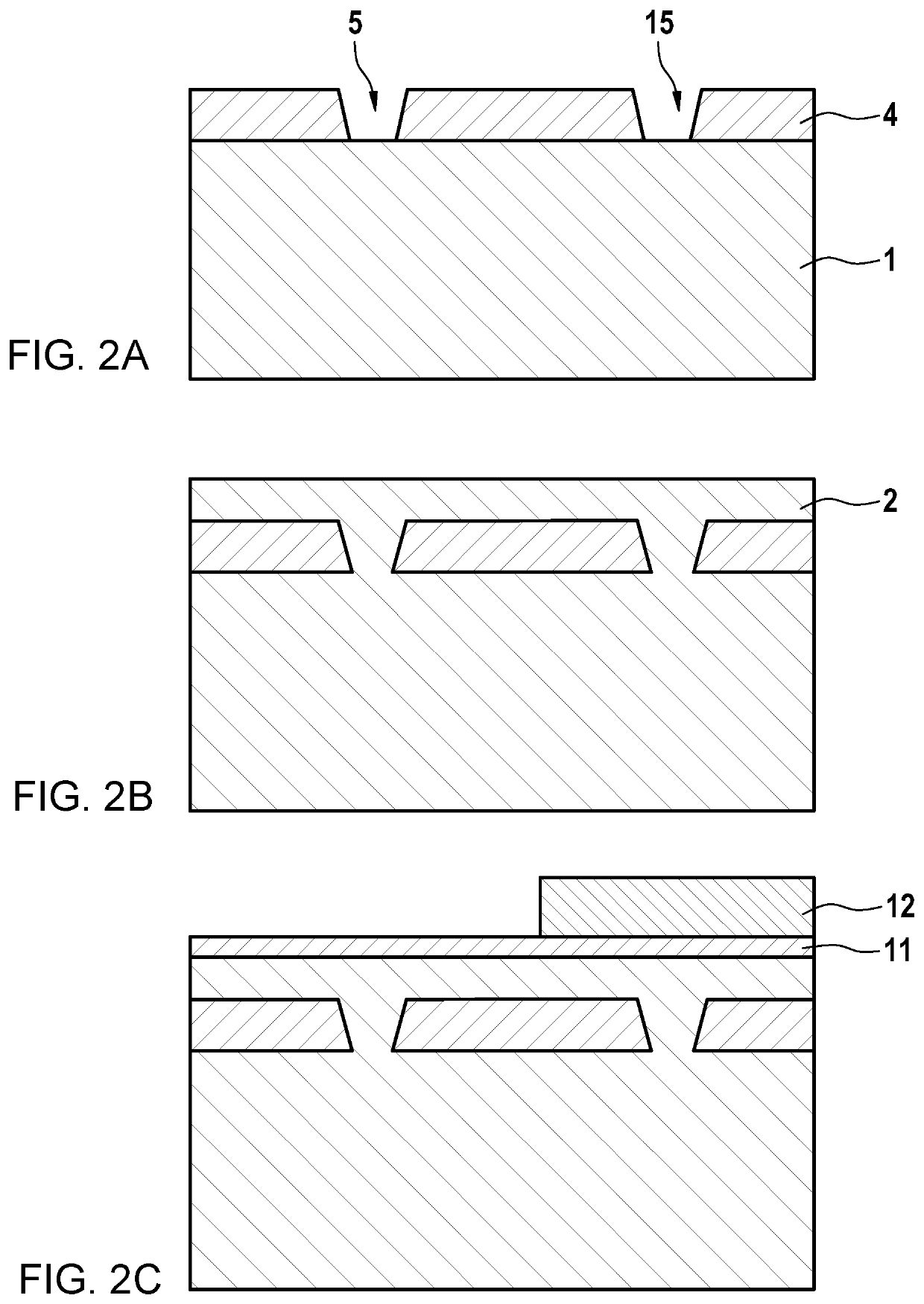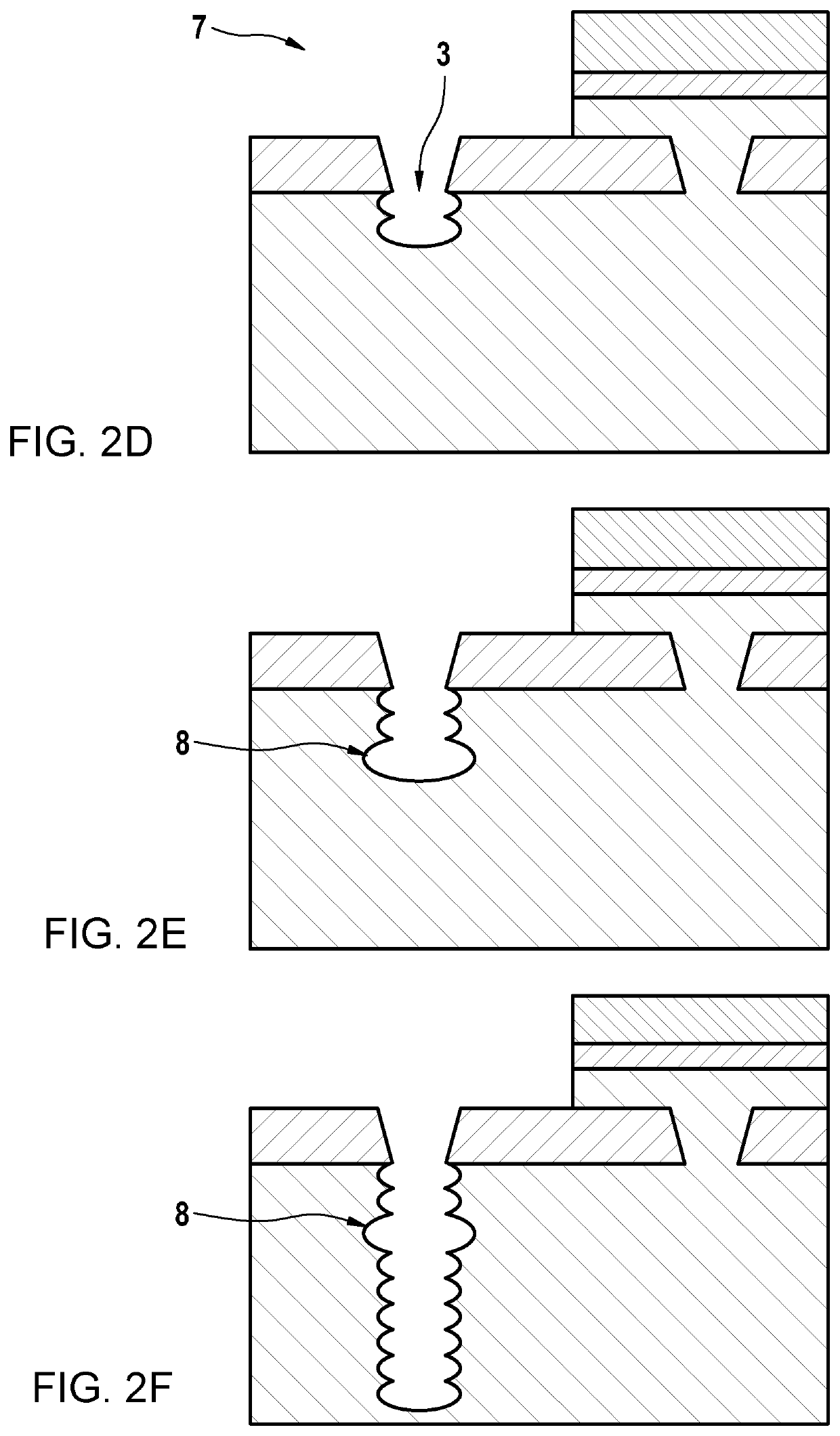Method for forming a trench in a first semiconductor layer of a multi-layer system
- Summary
- Abstract
- Description
- Claims
- Application Information
AI Technical Summary
Benefits of technology
Problems solved by technology
Method used
Image
Examples
Embodiment Construction
[0025]FIGS. 1A and 1B schematically illustrates two structures generated by trench etching using deep reactive ion etching (DRIE). The two structures may, for example, be deflectable masses of a microelectromechanical system. The vertically extending walls are formed by a cyclical alternation between etching and passivation steps, so that grooves 9 typical of this method arise at the trench wall. In the process, the width (i.e., the horizontal extension with respect to the drawing plane) of the trenches and of the generated structures is defined by an etching mask, which is removed after the trenches have been formed. As is shown to the right in FIG. 1B, a slightly lesser material removal takes place directly beneath the etching mask at the upper edge of the trench, so that an overhang 16 (“blade”) remains there after the removal of the etching mask. This “blade”16 may impinge on an adjoining structure and break off during a deflection of the movable mass or result in hooking. To av...
PUM
 Login to View More
Login to View More Abstract
Description
Claims
Application Information
 Login to View More
Login to View More - R&D
- Intellectual Property
- Life Sciences
- Materials
- Tech Scout
- Unparalleled Data Quality
- Higher Quality Content
- 60% Fewer Hallucinations
Browse by: Latest US Patents, China's latest patents, Technical Efficacy Thesaurus, Application Domain, Technology Topic, Popular Technical Reports.
© 2025 PatSnap. All rights reserved.Legal|Privacy policy|Modern Slavery Act Transparency Statement|Sitemap|About US| Contact US: help@patsnap.com



